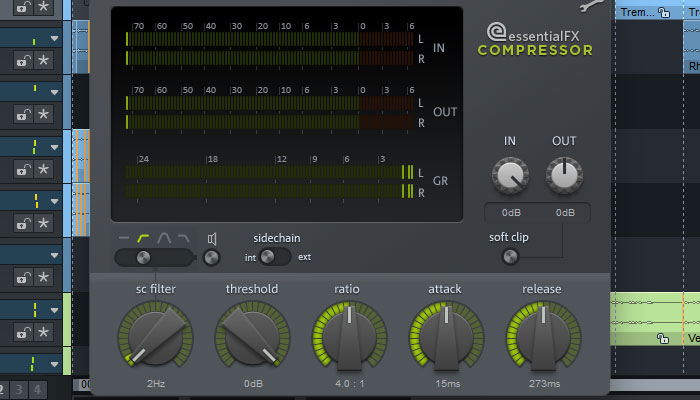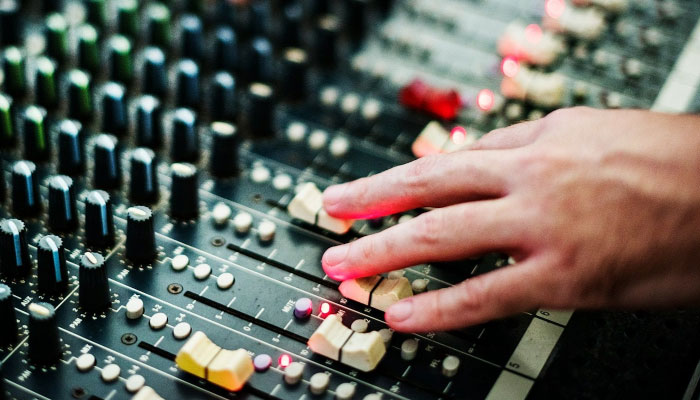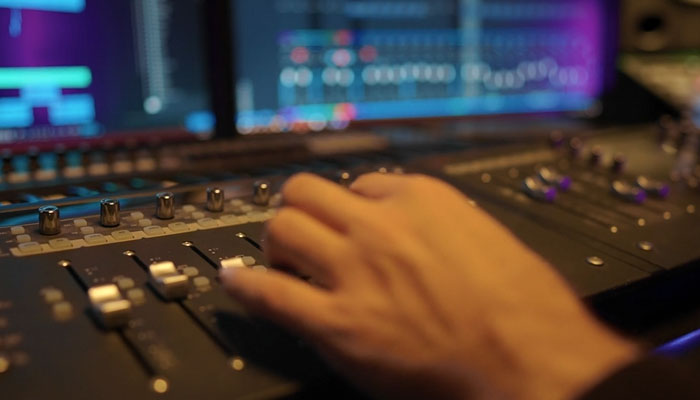You're just setting out on your journey as a music producer. The range of software, whether it's free music production software or something you need to pay for, is vast. The number of choices is positively bewildering.
It's something that every new producer has faced. Where do you even begin when it comes to music production software, when there are so many choices available? Does everything work on Mac and Windows?
Fortunately, you're not alone, so come with us now as we take a look at the best software for newcomers to music production.
Best Music Production Software for Beginners in 2025 (Mac)
| Software | What Makes It Special | Price |
| Logic Pro | Designed and built for Mac exclusively. | $199.99 |
| GarageBand | Free for any Mac user but still powerful. | Free |
| Audacity | Free software has never been so great. Also excellent cross-platform if you work with Windows or Linux. | Free |
| Pro Tools Intro | Learning an industry standard. | Free |
1. Logic Pro $199.99
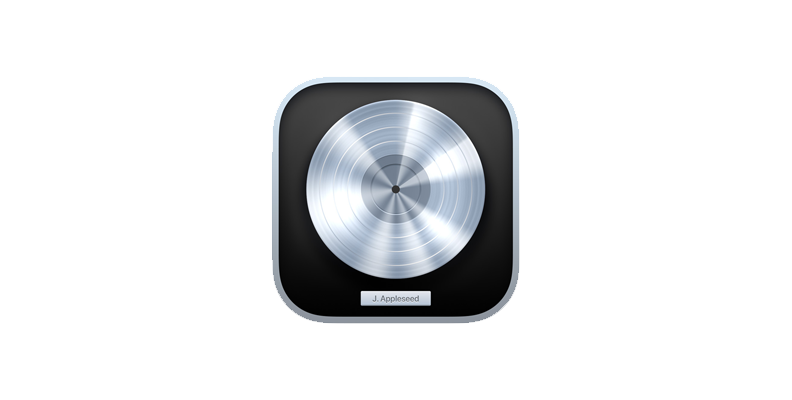
If you're a Mac user, there's no easier place to begin than with Apple's own DAW (Digital Audio Workstation), Logic Pro. It's software that is exclusive to the Mac, which means, apart from Windows users not getting a look-in, that it is specifically designed to work with Apple hardware and architecture. Because of this, it can use the power of Apple's hardware design to the best advantage and produce a great DAW for newcomers and pros alike.
The software comes with a huge number of plug-ins and settings, so even people who are new to music production can get started straight away without having to go through endless downloads - everything is right there. Additionally, there's great support for audio and MIDI tracks, blending everything together seamlessly.
The software is continually developed and improved, so you know you're always getting the most up-to-date features, which now also include integrated AI to help beginners find their way or fill in gaps that you might have. This now includes "session musicians" if you find yourself struggling to put a track together. The new ChromaGlow tool is a great addition - a saturator that can take pretty much any track and make it "sound great". For newcomers, it's a godsend, yet it contains enough flexibility to be of use to anyone.
The user interface is simple to understand, and from basic tools right through to professional set-ups, Logic delivers. If you're an on-the-go producer, there's an iPad version so you can continue your work on the road.
If you're a Mac user and you need a one-stop DAW, Logic is an obvious, high-quality choice to go for.
Pros:
- Perfect for anyone in Apple's ecosystem.
- Powerful, flexible, and fully featured professional software.
- Amazing range of plug-ins straight out of the box.
Cons:
- Not cheap for newcomers.
- Fairly heavy on resources so newer hardware is recommended.
- Mac only - if you're a Windows user you're out of luck.
2. GarageBand $0.00
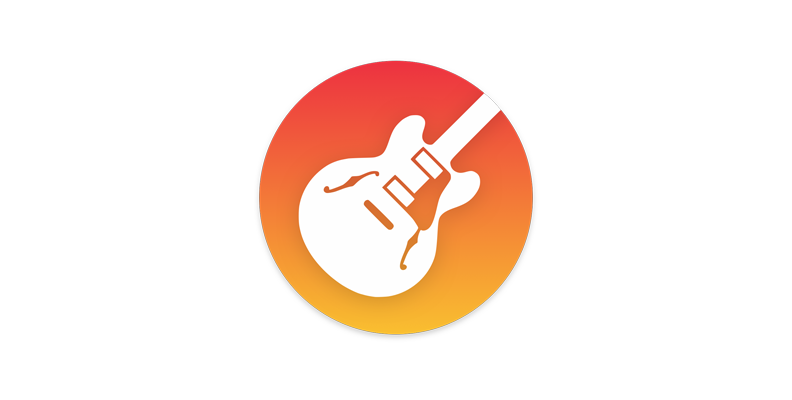
If the prospect of getting to grips with Logic Pro seems a little daunting or indeed if your budget can't quite stretch to it, there's always the option of GarageBand. GarageBand is Apple's free DAW, and it is specifically targeted at newcomers as an easy entry point into the world of music production.
Considering it's completely free, GarageBand has a surprisingly wide range of tools to get you started. These include plenty of virtual instruments to help you create the sound you want, and there's a vast library of loops and sounds so you can construct pretty much anything you want to. They're also a great learning tool as well, helping you get a feel for what it is you want to achieve and how to go about making that happen within the software.
The Drummer session is remarkably good at generating loops, beats, and grooves for practically any style, and there's a good range of virtual amps for guitarists to try out, from vintage 60s amps through to much more contemporary models.
The design has evolved nicely over the years, too, and the intuitive interface makes starting out as simple as possible for people who are still on a learning curve. True, there's still a fair amount to get to grips with initially, but that's true of any DAW, and GarageBand does a good job of making settings and features available with a minimum of fuss.
While GarageBand doesn't have the same range of features as its big brother, Logic Pro, it's a fantastic way to start recording and working with music and really learning the craft of production. For a piece of free music-making software, you really can't go wrong!
Pros:
- Cutting down doesn't mean compromise, especially for beginners.
- For free music-making software, it's remarkably well featured.
- Simple design makes getting started easy.
- Can't argue with the price!
Cons:
- A little limited compared to Logic Pro.
- No advanced mastering tools (though how much of an issue that is for newcomers is debatable).
3. Audacity $0.00
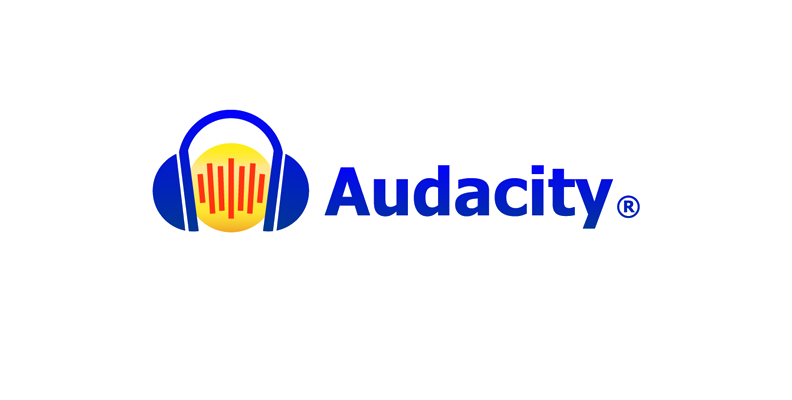
When it comes to free digital audio workstations, Audacity is a name you will hear bandied about constantly and for good reason. Audacity has developed from a simple audio editor into what is now pretty much a fully-fledged DAW, and considering it is free software, it's a remarkable tool indeed.
These days, Audacity's layout looks pretty old-fashioned, but that has the advantage of making it very easy for newcomers to figure out - indeed, it's possible it might be the easiest DAW to learn on pretty much any platform.
The range of tools Audacity supports has grown, and far from just supporting AU plug-ins (Apple's proprietary plug-in format), it now also supports VST and VST3 plug-ins. That means you have access to a practically infinite range of tools and plug-ins, both free and paid for, available on the internet.
Audacity has also recently introduced real-time, non-destructive editing, meaning you can go back and revert any changes you have made to a track without changing anything else, an absolute godsend for people who are just learning the craft of production. That's not a feature you will often see in free music production software, so it's very much appreciated.
Audacity is also lightweight, so if you have an older Mac, it won't be suffering under the strain of Audacity. And there's a brilliant community that has grown up around Audacity, so if you need support for anything, you'll find it out there.
There are a few limitations worth noting. Audacity can only record one track at a time, and it's not quite as expansive as a full DAW. But if you are dipping your toe in the music production waters, it's a great place to start and one of the best free music editing tools out there.
Pros:
- Not a free version of other software, simply free! And open source too, with full third-party plug-in support.
- Very good for beginners and an excellent starting point for anyone.
- Great for making quick changes or fast pieces of work.
- Very resource light so pretty much any hardware can run it.
Cons:
- Interface looks so old it's practically drawing its pension! (Though an updated version is in the works.)
- Very well featured, but it's not quite a full digital audio workstation.
4. Pro Tools Intro $0.00
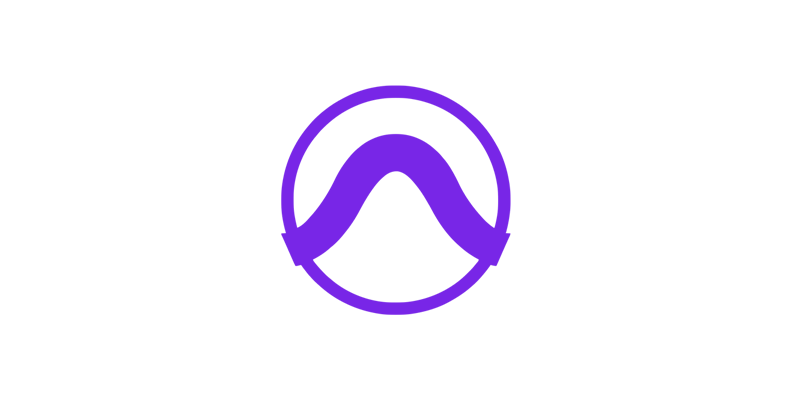
In some ways, Pro Tools, from Avid Software, is an odd choice for someone just beginning their music production journey. You will have noticed that a few entries on this list are free, and Pro Tools is a little bit in between. The Intro version is free, but the most expensive version, which weighs in at a hefty $999.00, very much isn't.
However, Pro Tools is an industry standard when it comes to recording and editing, and you will find it in recording studios around the world. Having access to a free version that lets you learn how to use one of the most widely adopted digital audio workstations is a great boon, and for those who want to produce music and get serious about it, learning Pro Tools is a no-brainer.
One of the things Pro Tools is most known for is its workflows, and Pro Tools Intro makes learning how to do this a reason to use it. There's fantastic support for a range of audio interfaces, so whatever audio interface you're using, you'll be in good standing. However, if you just want to do some simple recording without the use of an interface, you can do that too.
There are plenty of virtual instruments for a newcomer to play around with, and MIDI is fully supported up to eight tracks. You can record up to four tracks simultaneously, and there are 35 plug-ins that come as default with the software. Pro Tools Intro also now supports Avid's proprietary AAX plug-in format, which wasn't true of previous versions.
Pro Tools Intro obviously isn't as fully-featured as the paid version, and it does have a steeper learning curve than some pieces of software on this list. If you want to get serious about music production and learn the tools of the trade without a big financial layout, Pro Tools Intro is an ideal place for Mac users to begin.
Pros:
- Given that the Intro version is free, there's a lot in here.
- Industry standard, so learning Pro Tools in any form is a big plus.
- Great workflows.
Cons:
- If you want to move up from Pro Tools to one of the higher tiers, it's going to cost you.
- Not quite as easy to get to grips with as some others on this list.
- Not ideal for larger or more complex projects.
Best Music Production Software for Beginners in 2025 (Windows)
| Software | What Makes It Special | Price |
| Music Studio | Perfect learning tool with more advanced versions available as you develop. | $2.92 p/m or $95 perpetual |
| Adobe Audition | The might of Adobe meets a DAW with more plug-ins and tools than you’ll know what to do with. | $34.99 p/m |
| Cakewalk Next | Comprehensive piece of software for no outlay and top-tier MIDI support. | Free |
| FL Studio (Fruity) | The sequencer! The amazing core component makes this a great choice. | $99.00 perpetual |
1. Music Studio Free trial, $2.92 p/m, or $95 perpetual
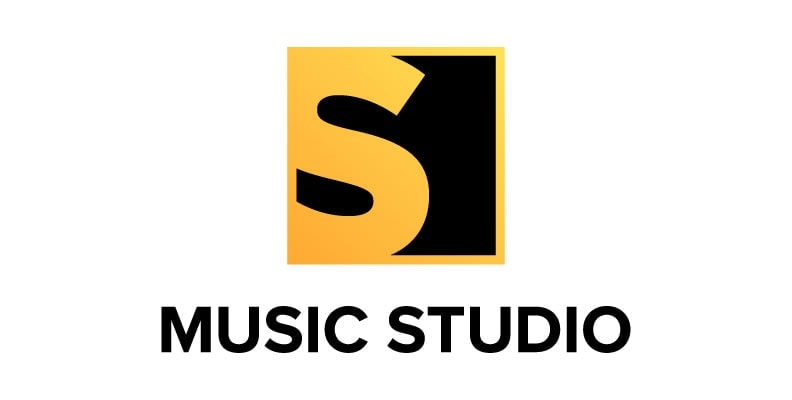
Boris FX's Music Studio is an ideal place for newcomers to begin. The Windows-only Music Studio lets anyone begin their music production journey without any large financial overhead. When it comes to free music production software, it's a great place to begin.
A simple, uncluttered interface greets you when you start the software, with an intuitive interface that lets you dive straight in. That makes it simple when you want to start recording, but there's more than enough power under the hood to keep things moving once you've captured your initial recordings.
There's great AUX channel support, with both pre and post faders allowing you to create separate monitor mixes, something that a lot of free or beginner software doesn't have. There are some great virtual instruments as well, from classical through to electronic, rock, and pop. Whatever genre you're composing in, you'll find top-quality instrumentation.
The MIDI support is excellent too, allowing you to combine any MIDI VST plug-ins with your keyboard for the ultimate variety, and the MIDI interface is clean and clear (something that's not always the case even in very expensive software packages).
Editing, mixing, and mastering are also fully featured and present beginners with an opportunity to learn the skills needed without compromising on quality.
Music Studio is a remarkable piece of software that allows newcomers to get started with all aspects of music production without having to compromise on quality.
Pros:
- Easy to start working with, powerful enough to keep working with.
- Excellent MIDI support and layout.
- Supports up to 32 instruments in a single project.
Cons:
- Windows only. If you're a Mac user, you're out of luck.
2. Adobe Audition $34.99 p/m

There are fewer bigger names in computer software than Adobe, and Audition is their digital audio workstation, made to compete with the very best out there.
One of the great benefits of Audition, especially for newcomers, is how customizable it is. The interface can be adjusted, changed, and rearranged to suit your needs so you don't have to conform to how things "should" be done. When you're just starting out, it's surprising how helpful this can be.
It's also a great tool for built-in plug-ins. While Audition does, of course, support external plug-ins, the quality of their own ones are hard to argue with. That means you don't have to go searching for exactly what you need - chances are it will already be in there somewhere.
Although Pro Tools and Logic Pro are often seen as the studio standards, Audition isn't far behind. That means that learning Audition will teach you valuable skills going forward. As you would expect from Adobe, Audition integrates perfectly with all their other apps.
Audition is also nicely flexible, so if you're looking to knock together some audio tracks, it's an ideal choice. But if you're a podcaster looking to get the perfect production, it's a great choice too, thanks to Adobe's built-in audio restoration features. The range of audio editing tools really is a step above much of the competition.
Whether you're dedicated to making music, recording podcasts, or a little bit of both, Adobe Audition is a great choice.
Pros:
- Comprehensive piece of of software.
- Great audio restoration tools and plug-ins.
- The full might of Adobe behind it.
Cons:
- Expensive for beginners.
- Strangely lacking in full MIDI support, which you would assume would be in place for a DAW like this.
- Not the easiest interface so a bit of a learning curve.
3. Cakewalk Next $0.00

One of the best free music production software choices is Cakewalk. While it may be a name familiar to producers who have been around the block a bit, it's worth newcomers paying attention to it as well.
Cakewalk is a complete DAW, containing both music production software and mixing. The interface layout is simple and straightforward, and pleasingly modern compared to some - it's obvious aesthetics have been blended with practicality. It's easy to get to grips with and simple enough to use for anyone to pick up. Music creation is simple and you will be recording in no time.
Cakewalk also supports unlimited MIDI and audio tracks which, as we have seen in other packages, is not always the case for free software. There's a full editing suite of tools available too, ensuring you can make any changes or corrections to your recordings with a minimum of fuss. Because the software is light, Windows won't come to a standstill when you use it, even on older PCs.
The mixing and mastering tools are also well worth paying attention to as well. Especially with free software, mastering tools are often lacking, which can be a frustrating oversight. Not here - Cakewalk has a great range of tools that means you can get your tracks sounding professional quickly and easily.
Once you have your music ready to unleash on the world, you can directly upload from Cakewalk to SoundCloud without any intermediate steps, meaning you can get your new tracks out there effortlessly.
If you want to get a head-start in learning how to be a producer without a big outlay but with the flexibility to unleash your inner creativity, you can do a lot worse than Cakewalk Next.
Pros:
- Free doesn't mean compromising on quality.
- Great mixing and mastering tools.
- Upload directly to SoundCloud.
Cons:
- You have to create a BandLab account for that SoundCloud integration, which is a drag.
- Not as comprehensive as Cakewalk Sonar (though Sonar isn't free).
4. FL Studio (Fruity Edition) $99.00

If electronic music is where you're at, FL Studio Fruity is a great DAW to start your music production journey with. It's a great tool for anyone who's looking to use electronic instruments over traditional acoustic ones, and the Fruity release is their entry-level DAW, ideal for newcomers.
As you would expect from a DAW that prioritizes electronic music, its MIDI editing functions are absolutely superb. It's simple to use yet powerful enough to satisfy practically anyone. You can paint patterns in to song arrangements on the piano roll, and everything is clean, clear, and laid out in a pleasingly intuitive fashion.
Learning how to set up a channel for recording MIDI is ever-so-slightly cumbersome but once you've learned it once, you'll marvel at the fact you didn't know how to do it before. The same is true for audio recording - just learn the process once then it's straightforward.
But the real core of FL Studio is it's sequencer. It's an integral part of the music production process in FL Studio and it's a genuinely impressive piece of software. From simple rhythms right up to the most complex beats, the FL Studio sequencer will have you covered.
Although producing electronic music is what FL Studio is best at, it's still a good choice for those looking for a more traditional recording experience. Interfaces are well supported, sound quality is great, and overall FL Studio is a great entry point for making music of any genre.
Pros:
- Fantastic sequencer makes it worth the asking price alone.
- Ideal for electronic music producers, but not restricted to them.
- Amazing MIDI.
Cons:
- $99.00 isn't nothing for the basic version, though it does include lifetime updates.
- Workflows are somewhat unique, so you can take a little adjusting to it if you've been used to using other DAWs in the past.
Final Words
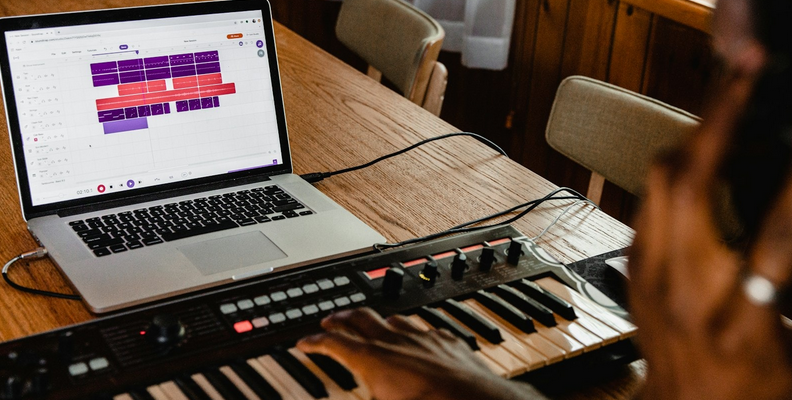
Starting out on your music production journey can be daunting. Armed with the right knowledge and insights, choosing the right music production software should become easy, whatever operating system you're using. Getting the right DAW can mean the difference between making a terrible noise and a classic hit. So even for beginners, it's vital to get the choice right. And now you can!
FAQ
How to Choose the Best Music Production Software
Choosing the right software is ultimately dependent on one thing - knowing what you're trying to achieve. Even if you are just starting out in music production, what you want to achieve is vital.
If you want to produce electronic music, go with a DAW that has excellent MIDI support and a great sequencer or sampler. If you're looking to record a more traditional band, go with a DAW that doesn't limit how many audio tracks you can record at the same time. And of course, choose one that allows you to edit audio with as little fuss as possible. The best free software will help you try before you buy, so make use of software that's either free or has free trials, so you know what you want before putting your hand in your pocket.
Whether you're making your own music or refining someone else's creation, choosing a DAW can make or break your results.









